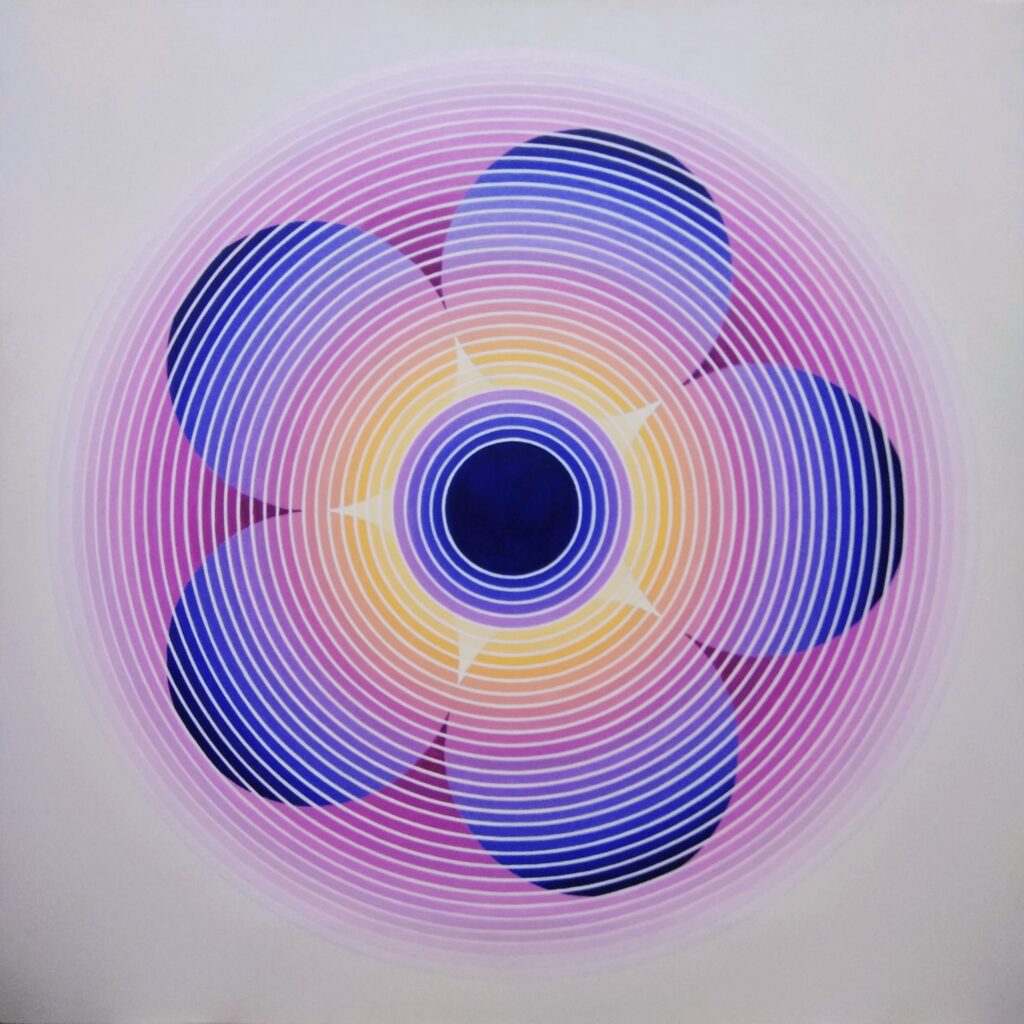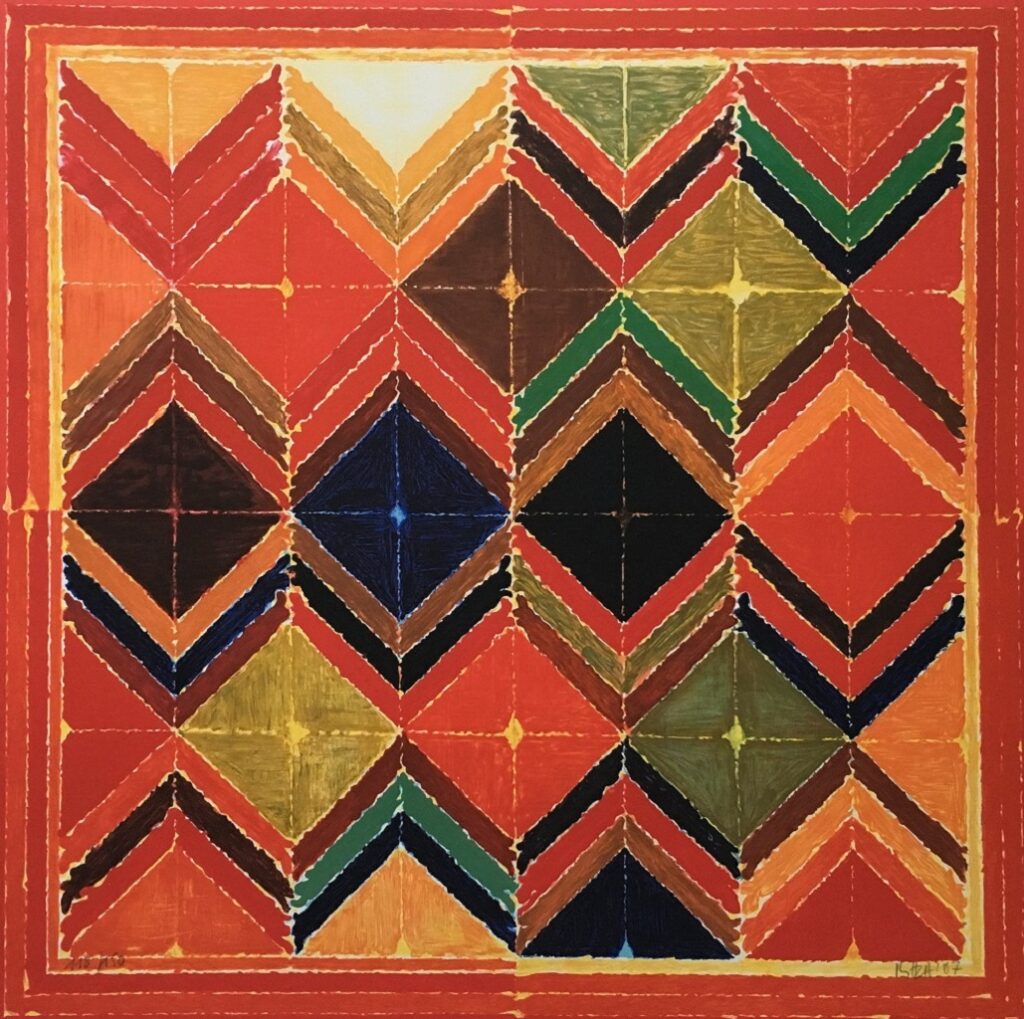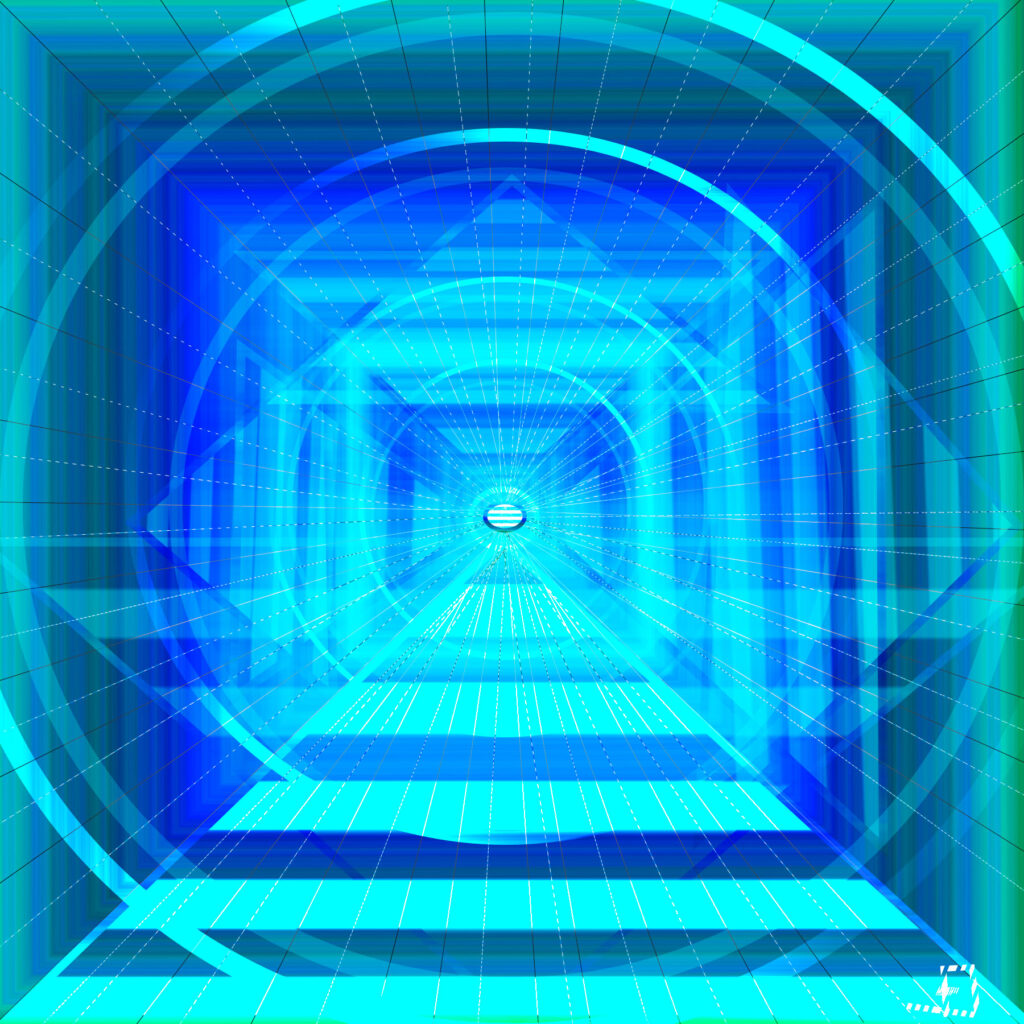In the evolving world of contemporary art, one visual language is rising with clarity and strength: geometry. It’s no longer just the domain of mathematicians or architects. Today, artists are shaping entire narratives through symmetry, precision, and spatial intelligence. And collectors are taking notice.
At Mojarto, India’s leading curated art marketplace, we’ve seen a striking surge in interest for contemporary geometric art. Whether it’s intricate tessellations, bold minimalism, or kaleidoscopic forms bursting with emotion, the demand is unmistakable. But why this sudden shift toward shape and symmetry? And what does it mean for collectors and modern-day art lovers?
Let’s decode the trend, understand its roots, and see how geometry is speaking volumes in today’s visual culture.

The Visual Rhythm of Symmetry
At first glance, geometric compositions may appear controlled or mathematical. But step in a little closer, and you’ll see something deeper, an emotional order in the chaos, patterns that echo ancient traditions, and modern interpretations that challenge perception.
Symmetry, in particular, evokes a universal sense of balance and calm. In a world that often feels fractured, these compositions bring order. Artists like S H Raza, Parmeshwar Chavan, and Amit Rajvanshi, featured on Mojarto, have infused abstract geometry into their work in ways that ground and provoke at once.
For today’s audience, symmetry isn’t just about aesthetics. It offers a kind of psychological clarity. And in home or office interiors, geometric wall art delivers that sense of visual harmony, whether it’s hanging in a modern living room or a corporate reception.

Geometry Is Not New—But Its Voice Is Louder Than Ever
Look back in time, and you’ll see that geometry in art has ancient roots. From Islamic tile work and mandalas in Hindu and Buddhist cultures to the precision of the Renaissance or the Bauhaus movement, geometry has always been a quiet force.
But in the context of contemporary geometric art, what’s happening now is more conceptual. It’s not just about lines and shapes. It’s about what those lines say. Artists are using geometry as a visual code to express emotion, question order, explore identity, or reflect on modern life.
Take, for instance, the subtle grid-based paintings by Ravi Gossain or the sharp, rhythmic sculptures of Anand Narayan. Their use of form is not decorative—it’s philosophical. At Mojarto, these pieces are not just popular with seasoned collectors but also with first-time buyers exploring modern art online for investment or inspiration.
Why Collectors Are Drawn to Abstract Geometry Art
Let’s be honest. Some art trends are niche. Others stay.
Abstract geometry art isn’t just a fleeting fashion; it’s becoming foundational in contemporary collections. Here’s why it resonates:
- Timeless appeal: Geometric pieces don’t age visually. They often outlive passing trends and blend effortlessly with evolving interior styles.
- High emotional range: From soothing repetition to bold statements, abstract geometry can evoke a full spectrum of feelings, without relying on figurative storytelling.
- Architectural compatibility: As modern architecture leans more toward clean lines and neutral tones, collectors are turning to geometric art to complement those aesthetics.
Many Mojarto buyers, including interior designers, architects, and business professionals, choose geometric works for their sleek sophistication. The ability to buy contemporary art that feels intellectual, modern, and rooted in tradition makes geometric art a safe yet exciting investment.
The Digital Influence: How Technology Amplifies Shape and Symmetry
Let’s not overlook the impact of digital tools in this movement. Software, 3D modelling, and algorithmic design have given artists a new playground. They can now manipulate space, depth, and repetition with more precision than ever before.
Digital art forms and NFTs have embraced geometry in a big way. Artists now experiment with fractals, coded patterns, and parametric design to create works that feel alive.
And with platforms like Mojarto, art buyers can buy geometric art online that fuses digital techniques with traditional mediums, bridging the best of both worlds. From 3D printed sculptures to mixed-media canvases, the geometry movement is not just rising; it’s transforming.

Who Buys Geometric Wall Art? And Why?
There’s a clear pattern in Mojarto’s buyer data. Those who lean towards geometric wall art typically belong to urban, design-savvy, and culturally aware segments. They aren’t just buying décor, they’re buying identity.
Here’s what they’re often seeking:
- Minimalism with meaning: Clean forms, uncluttered spaces, but with layers of thought beneath.
- Intellectual conversation starters: Pieces that provoke discussion, not just admiration.
- Mood alignment: Art that matches the psychological tone they want to evoke in a space—calm, curiosity, or bold ambition.
- A visual signature: In a world of oversaturated visuals, geometric art stands out with quiet strength.
For corporate clients or businesses browsing modern art online, symmetry offers a neutral yet sophisticated visual statement, perfect for boardrooms, lounges, or creative workspaces.
Geometry as the New Language of Identity
In a world hyper-saturated with digital imagery, geometry offers something rare: purity. Artists are stripping away distractions to get to the core of form. And that purity is what modern buyers are gravitating toward.
Interestingly, geometry is also being used to explore identity. Women artists, LGBTQ+ creators, and artists from indigenous communities are increasingly using structured forms to convey deeply personal stories, turning shape into metaphor.
This intersection of symmetry and storytelling is what’s defining the next chapter of geometric art. It’s no longer just about design; it’s about self-expression through form.
Mojarto’s Curated Picks: Where to Begin Your Collection
If you’re exploring geometric art for the first time or looking to expand your collection, Mojarto offers an unparalleled curation of both emerging and established voices in the space.
Start with:
- Mixed-media geometric canvases for a textured and layered experience
- Monochrome symmetry for a minimalist, elegant touch
- Colour-blocked shapes that bring vibrancy and optimism to interiors
- Digital geometric prints that explore the fusion of form and technology
Each piece is handpicked, authenticated, and backed by our buyer protection policy. Whether you’re a seasoned collector or someone looking to buy contemporary art with confidence, Mojarto is your trusted gateway.
Why This Trend Matters (Even If You’re Not an Artist)
Geometry in art isn’t just a visual trend; it’s a cultural shift. It reflects our collective desire for clarity, order, and intelligent design. In times of uncertainty, people turn to structure. And geometric art delivers just that, without sacrificing emotion or expression.
For collectors, interior designers, curators, and even tech-savvy millennials, contemporary geometric art is a way to engage with modern aesthetics while honouring timeless principles.
At Mojarto, we believe that when geometry speaks, it doesn’t whisper; it resonates. In patterns, in rhythm, in harmony. And for those who are listening, it’s an invitation to see the world anew through the lens of balance, beauty, and bold design.
Final Thought: Own the Balance
Geometry is more than shape. It’s a philosophy—a language of the universe rendered in line and color. When you bring a piece of geometric art into your space, you’re not just adding decor, you’re inviting a kind of energy that speaks in precision and peace.
Explore our geometric wall art collection on Mojarto. Discover artists who transform mathematics into poetry, symmetry into soul, and shape into story.
Because art isn’t just what you see, it’s what you feel, again and again, every time geometry speaks.